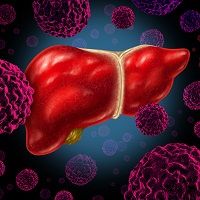Hidden Key to Treating Nonalcoholic Fatty Liver Disease
An international team of researchers recently reported that inhibiting a nuclear receptor in the gut could spur favorable treatment for nonalcoholic fatty liver disease (NAFLD), in which buildup of fat in liver cells disrupts liver function.

An international team of researchers recently reported that inhibiting a nuclear receptor in the gut could spur favorable treatment for nonalcoholic fatty liver disease (NAFLD), in which buildup of fat in liver cells disrupts liver function.
Recently published in The Journal of clinical Investigation, the study found that an antioxidant drug, tempol, and other antibiotics could successfully treat and potentially prevent NAFLD in mice administered high-fat diet.
According to the study, the underlying reason accounting for the drugs’ positive effect was that they are indirectly inhibiting an intestinal farnesoid X receptor (FXR), a “transcription factor that controls bile acid synthesis and transport in the liver and intestine,” within the mice models
These findings appeared to corroborate prior research that suggested both tempol and the antibiotics showed significant reduction in certain kinds of Lactobacillus, an intestinal bacteria converting lactose and other sugars to lactic acid. As Lactobacillus levels decrease, tauro-beta-muricholic acid, a bile acid, increases, which is reported to directly impede FXR.
Andrew Patterson, an assistant professor of molecular toxicology at Pen State University, said, “What our team found is that, if we genetically disrupt FXR expression in the intestinal epithelium, or inhibit it with tempol or antibiotics, we can prevent the development of NAFLD and obesity. Now, this is in mice, so the next thing is to continue to take the next steps and, eventually, to see if FXR might be a suitable target in humans.”
Additionally this recent discovery highlighted previous questions of gut microbes’ integral role in assisting metabolic disorder treatment.
Patterson commented, “The microbiome is incredibly complex and has been the subject of intense study in the last few years, due to the development of deep sequencing, and most importantly, due to the ability to analyze this complex data. What is exciting about this study, in particular, is that we feel like we are takin another small step in shedding some light on how diet and drugs can modulate bacterial and how these organisms modify their environment.”
Naturally further research is required to gauge how applicable these findings would be to human patients, especially studying potential adverse effects from “modulation of gut bacteria and FXR by drug treatment”.
2 Commerce Drive
Cranbury, NJ 08512
All rights reserved.